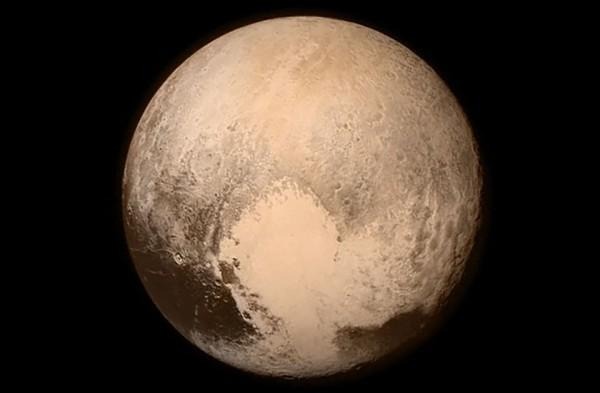New Horizons phones home to say it's OK
Pluto may be the god of death, but that has no bearing on NASA's greatest achievement yet. Dozens of sleep-deprived, and most likely teary-eyed, scientists and engineers at NASA awaited in both anticipation and dread as New Horizon's diagnostics data came flowing in a bit before 9 PM Eastern. The good news? New Horizons is safe and sound and didn't encounter any space debris that endangered its flight or its existence. The bad news? Now it has to beam down tons of data for scientists to drool over for the next months, even years!
The New Horizons probe and mission represented a landmark for NASA and space exploration in more ways than one. It is the closest that mankind has ever gotten to the now sub-planet and even the initial images that it sent has already yielded much fruit. The historic occasion was also the first time NASA took to social media, specifically Instagram, first to share the first ever closeup of Pluto.

New Horizons' closest flyby, which would have taken it 7,500 miles from Pluto's surface, isn't exactly without its dangers. There's an off chance that it could collide with some space debris. A lot of things could have gone wrong as well. Which is why it was critical for NASA to confirm the probe's status. The systems check, which took four and a half hours to travel 3 billion miles to Earth, revealed the location and status of the problem. Everything is green and New Horizons has begun its departure away from Pluto after a very brief date.
It's not the end of the Pluto story, however, not by a long shot. The probe managed to gather large amounts of data which it now has to send back to earth kilobit by kilobit, a process that will take 16 months. It will definitely be a torturous 16 months for scientists eager to receive the complete data set. The first batch of data will arrive in two sets, first around 7:00 to 8:25 AM and the other from 3:25 to 9:20 PM Eastern, 15th July. This will mostly be images with scientific data for analyzing Pluto's atmosphere and composition. It will also eventually be sending images of Charon, Hydra, and Nix, Pluto's moon, with much better detail.
Needless to say, Christmas has come early for NASA.
SOURCE: WIRED
